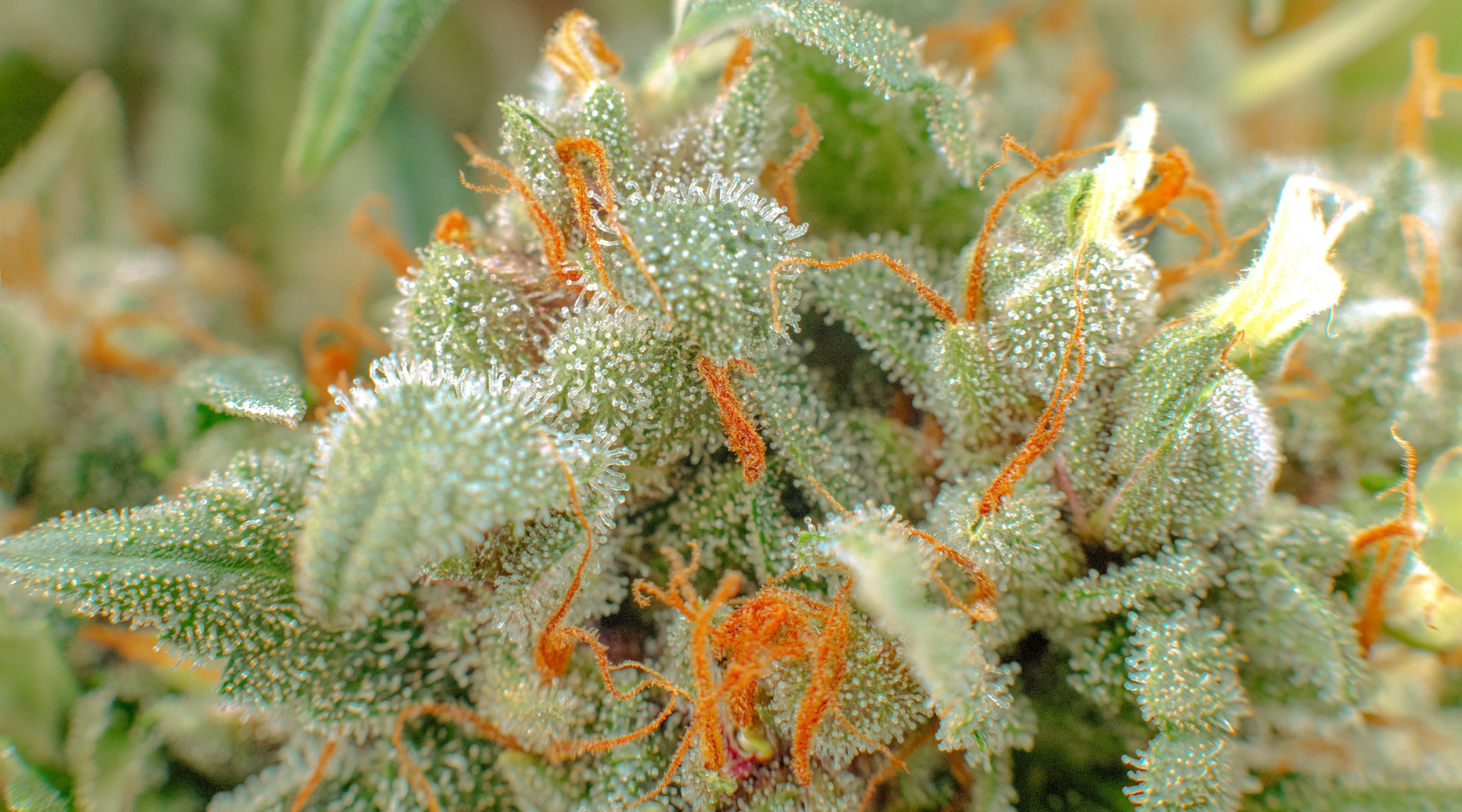How long does CBD take to work, and how long does it stay in your system?
9 min read
Lucy MacKinnon
‘How long does CBD take to work?’, and ‘How long does CBD stay in your system?’ seem like pretty simple questions, right?
The reality, as ever with the human body, is a bit more complicated.
There are five key factors that influence how long cannabidiol remains effective (and detectable) in the body. These are:
- Dosage
- Diet
- Method of application
- What drugs should not be taken with CBD
- Your metabolic rate
It’s not just a matter of time, either. How much CBD your body is actually able to absorb can make a huge difference. There is also a marked difference between CBD oil vs medical cannabis oil.
When taken orally and swallowed, only around 6% of the CBD makes it into the bloodstream, with the rest lost during digestion and metabolism. This means that everything from what you ate that day to your unique biochemistry can and will subtly shift how CBD behaves.
In this guide, we’ll break it all down clearly: how CBD moves through the body, how fast you can expect it to start working, how long the effects last, and how long it lingers behind the scenes
Contents
How does CBD enter and move through your body?
When you take CBD - whether as an oil, capsule, edible, vape, or cream - it first needs to be absorbed into your bloodstream before it can interact with your body's systems.
How this happens depends on the method of administration.
CBD is absorbed differently depending on whether it is inhaled, ingested, taken sublingually (under the tongue), or applied to the skin.
Once inside the body, CBD’s journey is shaped by two key processes: bioavailability (how much CBD reaches your bloodstream) and metabolism (how your body processes and eliminates it).
CBD is metabolised primarily by a family of liver enzymes known as Cytochrome P450 enzymes (CYPs), including CYP3A4, CYP3A5, and CYP2C9. These enzymes are responsible for breaking down many different drugs, and CBD is no exception. This metabolism plays a major role in how quickly CBD starts working, how long it lasts, and how long it stays detectable in your system.
The endocannabinoid system (ECS) also plays a crucial role. Once absorbed, CBD interacts indirectly with cannabinoid receptors and other molecular targets throughout the body, helping to regulate processes like mood, pain, inflammation, and sleep. Rather than activating these receptors directly, as THC does, CBD slows the breakdown of the body’s own endocannabinoids, allowing them to remain active for longer and support the body's natural balance.
Bioavailability: How much CBD actually gets absorbed
Taking CBD is a pretty simple affair - a few drops under the tongue, a capsule after lunch, a gummy before bed. But behind that ease lies a quiet, important (and often overlooked) question:
How much of that CBD is your body actually absorbing?
The short answer: much less than you think, and it depends on the route of administration, and the CBD product type.
The current evidence points to the fact that only about 6% of orally consumed CBD reaches your bloodstream. The rest is lost during digestion (broken down by stomach acid, degraded by enzymes, or flushed out by the liver).
This gap between CBD oil dose and effect is one of the main reasons people sometimes struggle to find consistent results with oral CBD. It is not that the product is ineffective; it's that your body simply cannot access most of what you take.
Some routes of administration are more efficient:
- Sublingual CBD oils and sprays: 12 to 35% bioavailability, with effects typically felt within 15 to 45 minutes.
- Inhaled CBD (via vaping): around 31% bioavailability, with effects usually kicking in within 3 to 10 minutes.
Oral products (like capsules and edibles) are convenient, but they simply offer the lowest rates of absorption. This is why many people see better results when they pair oral CBD with food, particularly meals high in healthy fats, which can improve absorption.
New research is also underway to solve the bioavailability challenge more fundamentally. A recent, extremely promising, lab study explored a CBD-phospholipid complex. The researchers paired CBD with fat-like molecules designed to make it dissolve better and pass through the gut lining more easily. In the lab tests, this formulation released and absorbed far more CBD than standard extracts, and remained stable even after long-term storage.
While human trials are still needed, the takeaway is clear: how you take CBD matters.
Different routes of administration
- Inhalation (vaping CBD oil): This is the fastest way to get CBD directly into your bloodstream, and offers high absorption rates. Effects are usually felt within 3 to 10 minutes, with a bioavailability of around 31%.
- Sublingual (CBD oils, sprays): Sublingual application involves dropping the CBD oil directly under the tongue, where it is absorbed through the mucous membranes. This route bypasses the digestive system and liver metabolism, leading to faster onset (typically 15 to 45 minutes) and higher absorption rates compared to oral ingestion.
- Oral ingestion (capsules, edibles, drinks): When swallowed, CBD passes through the digestive tract and liver before entering the bloodstream. This process delays onset (1 to 3 hours) and reduces bioavailability (around 6%), but the effects may last longer.
- Topical application (creams, balms, gels): CBD applied to the skin interacts with local cannabinoid receptors and doesn’t usually enter the bloodstream in significant amounts. It is ideal for targeted relief in specific areas like joints or muscles, with effects often felt within 10 to 20 minutes.
Factors that affect how long CBD stays in your system
Although the effects of cannabidiol have been known to last for a number of hours, it remains present and detectable in the body for much longer. CBD is a fat-soluble compound that stores itself in fat cells around the body, and so, like most medications, the metabolism rate of CBD is impacted by both BMI and diet. Therefore, it is scientifically assumed that CBD stays in systems with higher levels of body fat for longer periods of time, than those with lower levels of body fat.
When administered in edible form, CBD is processed through the digestive system, and its main method of elimination from the body is through excretion.
In 2021, a study that mimicked the human digestive tract demonstrated the bio-accessibility of cannabidiol is increased in the presence of fatty foods and bile salts. By analysing how hemp-based CBD interacted with fed and fasted states, researchers found that a pre-fed stomach improved the absorption rate of CBD and that high fat foods in particular benefited the micellization of CBD significantly, in comparison to starved stomachs.
This led researchers to conclude that to boost the efficacy and speed of CBD’s absorption, it should be taken alongside foods with high fat content.
How other drugs and administration methods affect CBD metabolism
Interactions with other medications and other natural substances can also affect how long CBD stays in the system. Cannabidiol’s bioavailability and subsequent effects can be impacted or influenced by other drugs within the body, especially those that are processed in the same way.
For example, the CYP3A4 enzyme metabolises many different kinds of medications, and so, when multiple drugs are taken together, the enzyme must choose which to metabolise first. This can cause a delay in the uptake of medications, allowing them to remain pharmaceutically active for longer periods than when they are taken alone.
Another pharmacokinetic study analysed urine samples before and after consuming CBD and found the administration method also plays a role in how long CBD stays in the system.
Researchers in this study discovered, after five days, CBD was still present in urine samples of participants who’d taken either an oral or vaporised dose of cannabidiol. However, CBD concentrations were much lower in samples taken from the vaping group, which indicates its quicker expulsion from the body.
Dosage also plays a part in how long CBD stays in the body. Just like any kind of substance or medication, the more CBD you take, the longer it takes to be flushed out of the system. Frequency of administration, metabolism, and tolerance all need to be considered when deciding what dose of cannabidiol should be taken. Your prescribing specialist will take all of this into consideration when deciding on your treatment plan.
Can you flush CBD out faster?
Although research has shown that CBD products containing the legal limit of 0.2% THC don’t tend to produce positive drug test results, there are many reasons people may want to flush their system of CBD. This could include starting a new type of medication, wanting to take a tolerance break, or preparing for an upcoming surgery.
Regardless of the reason for wanting to get CBD out of the system, the most common methods often involve diet adaptation. Because CBD is primarily expelled from the body in faeces and urine, conventional anecdotal methods of speeding up its elimination include eating high fibre foods and drinking lots of water.
Others recommend flushing CBD out of the system by increasing levels of physical activity to produce more sweat, or drinking detoxifying liquids such as herbal teas.
Final thoughts: How long CBD stays in your system depends on more than you might think
So, at the end of it all, only one thing can be said confidently - that is, there really is no “one size fits all” answer to either of the two questions we started this blog with. Everyone reacts to CBD at least slightly differently, and the way it is taken makes a marked difference to both how long and how strong the effects are.
The same can be said for how long the CBD will remain detectable. For most people, the immediate effects of CBD tend to last between two and six hours, but traces of the compound can linger in the body for days, sometimes even weeks, depending on factors like the method of administration, dosage, frequency of use, and individual metabolism.
And remember: while CBD is generally well-tolerated, it can interact with certain medications and health conditions. That is why speaking to a specialist, especially one experienced in prescribing medical cannabis for your specific health concern, is always the wisest first step.
And if you are considering whether a medical cannabis prescription might be a better fit for your needs, check our free medical cannabis eligibility checker to get started in under 20 seconds.
Share article
Did you like this article?
It is important to seek medical advice before starting any new treatments. The patient advisors at Releaf are available to provide expert advice and support. Alternatively, click here to book a consultation with one of our specialist doctors.
Elevate your wellness with medical cannabis
Get comprehensive care, convenience, and confidence with an all-in-one treatment plan.
Am I eligible?Authors
With five years of journalism and healthcare content creation under her belt, Lucy strives to improve medical cannabis awareness and access in the UK by producing high quality, credible content.
Editorial Policy
All of our articles are written by medical cannabis experts, guided by strict sourcing guidelines, and reference peer-reviewed studies and credible academic research. Our expert clinical team and compliance specialists provide valuable insights to ensure accuracy when required. Learn more in our editorial policy.
Need more help?










